Hokksund-rehab.no
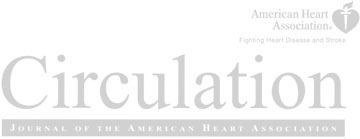
Superior Cardiovascular Effect of Aerobic Interval
Training Versus Moderate Continuous Training in Heart
A Randomized Study
Ulrik Wisløff, PhD; Asbjørn Støylen, MD, PhD; Jan P. Loennechen, MD, PhD; Morten Bruvold, MSc;
Øivind Rognmo, MSc; Per Magnus Haram, MD, PhD; Arnt Erik Tjønna, MSc; Jan Helgerud, PhD;
Stig A. Slørdahl, MD, PhD; Sang Jun Lee, PhD; Vibeke Videm, MD, PhD; Anja Bye, MSc;
Godfrey L. Smith, PhD; Sonia M. Najjar, PhD; Øyvind Ellingsen, MD, PhD; Terje Skjærpe, MD, PhD
Background—Exercise training reduces the symptoms of chronic heart failure. Which exercise intensity yields maximal
beneficial adaptations is controversial. Furthermore, the incidence of chronic heart failure increases with advanced age;it has been reported that 88% and 49% of patients with a first diagnosis of chronic heart failure are ⬎65 and ⬎80 yearsold, respectively. Despite this, most previous studies have excluded patients with an age ⬎70 years. Our objective wasto compare training programs with moderate versus high exercise intensity with regard to variables associated withcardiovascular function and prognosis in patients with postinfarction heart failure.
Methods and Results—Twenty-seven patients with stable postinfarction heart failure who were undergoing optimal
medical treatment, including -blockers and angiotensin-converting enzyme inhibitors (aged 75.5⫾11.1 years; leftventricular [LV] ejection fraction 29%; V
˙ O2peak 13 mL · kg⫺1 · min⫺1) were randomized to either moderate continuous
training (70% of highest measured heart rate, ie, peak heart rate) or aerobic interval training (95% of peak heart rate)3 times per week for 12 weeks or to a control group that received standard advice regarding physical activity. V
increased more with aerobic interval training than moderate continuous training (46% versus 14%, P⬍0.001) and wasassociated with reverse LV remodeling. LV end-diastolic and end-systolic volumes declined with aerobic intervaltraining only, by 18% and 25%, respectively; LV ejection fraction increased 35%, and pro-brain natriuretic peptidedecreased 40%. Improvement in brachial artery flow-mediated dilation (endothelial function) was greater with aerobicinterval training, and mitochondrial function in lateral vastus muscle increased with aerobic interval training only. TheMacNew global score for quality of life in cardiovascular disease increased in both exercise groups. No changesoccurred in the control group.
Conclusions—Exercise intensity was an important factor for reversing LV remodeling and improving aerobic capacity,
endothelial function, and quality of life in patients with postinfarction heart failure. These findings may have important
implications for exercise training in rehabilitation programs and future studies. (Circulation. 2007;115:&NA;-.)
Key Words: endothelium 䡲 exercise 䡲 remodeling 䡲 heart failure
In recent years, there has been a growing consensus that
Editorial p
exercise has beneficial effects in patients with cardiovas-
Clinical Perspective p
cular disease, even for those with severely impaired cardiacfunction, and that physical inactivity accelerates the severity
deaths among patients with established cardiovascular dis-
of heart failure.1,2 Peak aerobic exercise capacity directly
ease1,2; however, there is still controversy regarding the level
measured as peak oxygen uptake (V
and format of exercise that can yield optimal beneficial
2peak) was recently found
to be the single best predictor of both cardiac and all-cause
effects.3 Several lines of evidence suggest greater aerobic and
Received November 9, 2006; accepted March 30, 2007.
From the Department of Circulation and Medical Imaging (U.W., A.S., M.B., Ø.R., P.M.H., A.E.T., J.H., S.A.S., A.B., Ø.E.) and Department of
Laboratory Medicine (V.V.), Children's and Women's Health, Norwegian University of Science and Technology, Trondheim, Norway; Department ofCardiology (U.W., A.S., J.P.L., Ø.E., T.S.) and Department of Immunology and Transfusion Medicine (V.V.), St. Olav's Hospital, Trondheim, Norway;Institute of Biomedical and Life Sciences (G.L.S.), University of Glasgow, United Kingdom; and Department of Physiology, Pharmacology, Metabolismand Cardiovascular Sciences (S.J.L., S.M.N.), Medical University of Ohio, Toledo, Ohio.
Clinical trial registration information—URL: http://www.clinicaltrials.gov. Unique identifier: NCT00218933.
Correspondence to Ulrik Wisløff, PhD, Department of Circulation and Medical Imaging, Norwegian University of Science and Technology, Olav
Kyrres gt. 9, 7489 Trondheim, Norway. E-mail [email protected]
2007 American Heart Association, Inc.
Circulation is available at http://www.circulationaha.org
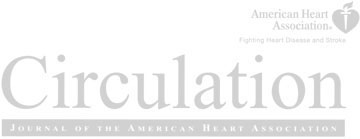
June 19, 2007
cardiovascular adaptations after high-intensity exercise than
Patient Characteristics and Medication Use
with low and moderate levels in patients with coronary artery
disease,4 chronic heart failure,5,6 or left ventricular (LV)
dysfunction function7 and in healthy subjects.8 Exercisetraining at an intensity of ⬇90% of V
O2peak is in the upper
range of current guidelines for humans.3 This level of aerobic
Body mass index, kg/m2
exercise can be achieved in an interval-training format in both
Systolic blood pressure, mm Hg
humans and animal models. The rationale for interval training
Diastolic blood pressure, mm Hg
is that it allows for rest periods that make it possible for
patients with heart failure to complete short work periods at
Total cholesterol, mmol/L
a higher intensity (which challenges the heart's pumping
Serum creatinine, mol/L
ability) than would be possible during continuous exercise.
Aerobic interval training (AIT) involving periods at 90% ofV
O2peak has been shown to rescue impaired cardiomyocyte
contractility, attenuate myocardial hypertrophy, and reduce
myocardial expression of atrial natriuretic peptide in a rat
model of postinfarction heart failure.9 The beneficial effects
Long-acting nitrates
on cardiac remodeling and myocyte function were similar to
those observed with the angiotensin II receptor blocker
losartan,10 which indicates that AIT might be a potent
Percutaneous coronary intervention*
modifier of postinfarction heart failure. We therefore hypoth-
Coronary artery bypass surgery*
esized that AIT is more effective than moderate continuous
training (MCT) in enhancing cardiovascular fitness and
Data are mean⫾SD or number of patients.
*Intervention performed ⬎12 months ago.
reversing myocardial remodeling in patients undergoing op-timal treatment for stable heart failure after a myocardial
increased workload and a respiratory exchange ratio ⬎1.05 were
used as criteria for maximal oxygen uptake. This was accomplishedin 25 of 27 patients (at pretest and posttest), and results are by
. Work economy was determined as oxygen uptake
at a standard submaximal workload; for each patient, we used theidentical workload at posttest to measure work economy. Immedi-
We enrolled 27 consecutive patients (aged 75.5⫾11.1 years) with
ately after this workload, blood was drawn from a fingertip for
postinfarction heart failure from the Department of Cardiology, St.
measurement of lactate concentration. Ventilatory threshold was
Olav's Hospital, Trondheim, Norway. None of the patients had a
recorded as an indication of anaerobic threshold.
myocardial infarction in the 12 months preceding the study. Twelvepatients were ⬎80 years of age, 9 were 70 to 80 years old, 4 were 60
to 70 years old, and 2 were 50 to 60 years of age. All exhibited anLV ejection fraction ⬍40% and were stable with optimal treatment
Patients randomized to AIT and MCT met for supervised training
that included -blockers and angiotensin-converting enzyme (ACE)
twice weekly and performed 1 weekly session at home. The controlgroup met for supervised training once every 3 weeks. All training
inhibitors. All patients had received -blockers and ACE inhibitors
consisted of "uphill" treadmill walking as described previously.4 The
for ⬎12 months. One patient had atrial fibrillation; the rest had sinus
AIT group warmed up for 10 minutes at 50% to 60% of V
rhythm as evidenced by a-wave velocities. None of the patients had
(⬇60% to 70% of peak heart rate) before walking four 4-minute
a pacemaker. As judged by the body mass index (Table 1), patients
intervals at 90% to 95% of peak heart rate. Each interval was
were noncachectic. Patients were randomly assigned to either high-
separated by 3-minute active pauses, walking at 50% to 70% of peak
intensity AIT (n⫽9), MCT (n⫽9), or a control group (n⫽9).
heart rate. The training session was terminated by a 3-minute
Exclusion criteria included unstable angina pectoris, uncompensated
cool-down at 50% to 70% of peak heart rate. Total exercise time was
heart failure, myocardial infarction during the past 4 weeks, complex
38 minutes for the AIT group. Patients in the MCT group walked
ventricular arrhythmias, no use of -blockers and ACE inhibitors,
continuously at 70% to 75% of peak heart rate for 47 minutes each
and orthopedic or neurological limitations to exercise. Medications
session to make sure the training protocols were isocaloric, as
(Table 1) did not change during the 12-week study period. The study
detailed previously.4 All subjects used a heart rate monitor (Polar
was performed according to the Helsinki declaration and was
Electro, Kempele, Finland) to obtain the assigned exercise intensity.
approved by the regional medical research ethics committee. Written
The Borg 6-to-20 scale was used to assess the rate of perceived
informed consent was obtained from all patients.
exertion during and after each training session. The speed andinclination of the treadmill was adjusted continuously to ensure that
every training session was carried out at the assigned heart rate
Subjects were randomized and stratified (by gender and age) to AIT,
throughout the training period. Blood lactate was measured after the
MCT, or control. The randomization code was developed with a
first 3 and last 3 training sessions. Weekly home-based training
computer random-number generator to select random permuted
consisted of outdoor uphill walking. Patients were instructed to
perform the training program as in the laboratory; patients in theMCT group walked continuously for 47 minutes without breathing
heavily, whereas AIT patients performed four 4-minute intervals
After a 10-minute warm-up, a V
test (with MetaMax II, Cortex,
with an exercise intensity that made them breathe heavily without
Leipzig, Germany) was performed with an individualized treadmill
becoming too stiff in their legs. Patients were instructed to immedi-
ramp protocol with individualized constant band speed and increased
ately stop home-based training if they had chest pain or any other
inclination by 2% when oxygen uptake stabilized at each workload
distressing symptoms and contact the emergency department at the
was reached. A leveling off of oxygen uptake despite
hospital. Home-based training intensity was recorded twice by heart
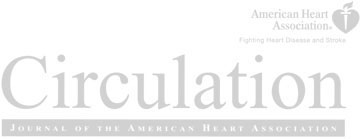
Wisløff et al
Interval Training in Heart Failure
rate monitors, placed so that the patients were unable to see their
with standard procedures at St. Olav's University Hospital, Trond-
heart rate during the exercise. Recordings affirmed the correct
heim, Norway. Oxidized LDL was measured in plasma with the
exercise intensity during home training. The control group was told
Mercodia oxidized-LDL ELISA (Mercodia, Uppsala, Sweden). Total
to follow advice from their family doctor with regard to physical
antioxidant status (TAS) was measured in plasma samples with the
activity; in addition, they met for 47 minutes of continuous treadmill
colorimetric TAS assay (Randox Laboratories Ltd, Crumlin, United
walking at 70% of peak heart rate every 3 weeks.
ethylbenzthiazoline-6-sulfonic acid) (ABTS) incubation with met-
myoglobin and H O to produce the radical cation ABTS⫹. The
Endothelium-dependent and endothelium-independent dilation of the
radical has a stable blue-green color that is measured at 600 nm.
brachial artery was measured by ultrasound (14-MHz ultrasound
Antioxidants present in the added sample weaken the color intensity
Doppler probe, Vivid 7 system, GE Vingmed Ultrasound, Horten,
in proportion to their concentration. The assay was performed with
Norway).11 The guidelines for determining and analyzing flow-
an automated system (Cobas Mira Analyzer, Hoffmann-LaRoche,
mediated dilation (FMD) described by Corretti et al12 were adhered
Basel, Switzerland). For calculation of total antioxidant status, the
to strictly. The measurements were done on the brachial artery 4.5
absorbance of the patient's plasma was related to the standard,
cm above the antecubital fossa before inflation of a pneumatic cuff
on the upper arm to 250 mm Hg for 5 minutes and at 1 minute after
1.76 mmol/L), according to the manufacturer's instructions (Randox
cuff release. FMD was expressed as percentage dilation from
Laboratories Ltd, Crumlin, UK). Commercial enzyme immunoas-
baseline diameter to that observed 1 minute after cuff release.
says were used to determine endothelin-1 (R&D Systems, Minneap-
Endothelium-independent dilation was measured by administering
olis, Minn), insulin-like growth factor 1 (R&D Systems), and
500 g of nitroglycerin sublingually; no differences between groups
pro-B-type natriuretic peptide levels (proBNP, Roche Diagnostics,
were observed (data not shown).
Indianapolis, Ind).
Quality of Life
Echocardiography was performed by 2 experienced cardiologists
Quality of life was measured by the MacNew Heart Disease
(A.S. and T.S.) blinded to the patients' group assignment. Subjects
Health-Related Quality of Life questionnaire (MacNew),13 which
were examined at rest in the left lateral supine position with a
has been shown to be well-suited for an older population. The
Vingmed Vivid 7 scanner with B-mode ultrasound at a frame rate of
self-administered MacNew questionnaire is designed to evaluate
50 Hz. The following data were recorded: parasternal M-mode and
how daily activities and physical, emotional, and social functioning
long-axis B-mode; apical B-mode from 3 standard planes; pulsed
are affected by heart disease.13
Doppler flow recordings of LV outflow, mitral inflow, and apicalM-mode; and pulsed tissue Doppler in the septal and lateral points in
the 4-chamber plane and the anterior and posterior points in the
Data are expressed as mean⫾SD unless otherwise stated, with a
2-chamber plane. Systolic mitral annulus excursion and peak annulus
significance level of P⬍0.05. The Kruskal-Wallis test and post hoc
velocities in systole, early diastole (Ea), and late diastole were
test was used to evaluate unrelated observations between groups,
measured as the average of the 4 points. Volumes were measured by
whereas ANOVA with Scheffé post hoc analysis determined group
the modified Simpson biplane method. Stroke volume was measured
differences between related observations.
by 2D volumetry.
The authors had full access to and take full responsibility for the
integrity of the data. All authors have read and agree to the
manuscript as written.
Muscle biopsy samples were obtained from the vastus lateralis witha sterile 5-mm-diameter biopsy needle (Bergstrom) under local
anesthesia. Muscle biopsy samples were homogenized in lysisbuffer, and equal amounts of lysates were analyzed by SDS-PAGE
At baseline, there were no differences in medical treatment
and Western blot analysis with goat polyclonal antibodies against
(Table 1) or physiological variables (Tables 2 through 4)
peroxisome proliferative activated receptor-␥ coactivator-1␣ (PGC-
among the 3 groups. Medical treatment did not change during
1␣), an indicator of mitochondrial biogenesis (Santa Cruz Biotech-
the intervention period. During the experimental period, 1 of
nology, Santa Cruz, Calif). Gels were reprobed with a monoclonalantibody against ␣-actin for normalization (Sigma, St. Louis, Mo).
the patients in the moderate-intensity group died of cardiac
Proteins were detected by chemiluminescence and quantified by
causes, unrelated to exercise training, and data from 26
patients were available from postexercise tests. Patients in theAIT and MCT groups performed 92⫾2% and 95⫾3% of the
Sarcoplasmic Reticulum Ca2ⴙ ATPase-1 and -2
scheduled training sessions, respectively. Measured exercise
intensity, blood lactate, and Borg scale were different be-
Reduced maximal rate of calcium (Ca2⫹) reuptake into sarcoplas-
tween the AIT and MCT groups during the training sessions,
matic reticulum has been inversely related to increased skeletalmuscle fatigue in heart failure patients. To measure this, Ca2⫹ (50
which confirms that the difference in exercise intensity
mol/L) was added to skinned fibers from the vastus lateralis muscle
between the groups was as intended (Table 2).
to induce a rapid increase in [Ca2⫹], and kinetics of the subsequentdecline in Ca2⫹ were analyzed with Fura-2 and an epifluorescence
microscope (Diaphot-TMD, Nikon, Tokyo, Japan) to assess maxi-
Body mass index, blood pressure, hemoglobin, total cholesterol,
mum sarcoplasmic reticulum Ca2⫹ ATPase (SERCA)-1 and -2transport capacity.
and serum creatinine did not change (baseline values presentedin Table 1). AIT subjects tended to have lower serum triglycer-
ide (2.1⫾1.2 mmol/L pretest versus 1.7⫾0.7 mmol/L posttest,
Citrated and EDTA plasma was obtained from venous blood by
P⫽0.11) and fasting glucose (7.0⫾2.0 mmol/L pretest versus
centrifugation at 3000 rpm for 10 minutes at 4°C. Aliquots of plasma
6.1⫾2.6 mmol/L posttest, P⫽0.10) levels after training, in
were then stored at ⫺80°C to allow batch analysis.
addition to a trend for increased high-density lipoprotein levels
Serum triglycerides, glucose, high-density lipoprotein, low-
density lipoprotein (LDL), total cholesterol, hemoglobin, high-
(1.2⫾0.4 versus 1.3⫾0.3 mmol/L, P⫽0.20). The New York
sensitivity serum C-reactive protein, and creatinine were measured
Heart Association functional class tended to be reduced in both
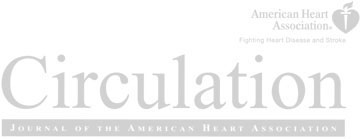
June 19, 2007
Aerobic Capacity and Exercise Data
Peak treadmill test
V˙o2peak, mL 䡠 kg⫺1 䡠 min⫺1
Peak heart rate, bpm
关La⫺兴b at V˙o2peak, mmol/L
Anaerobic threshold
% Of peak oxygen uptake
mL 䡠 kg⫺1 䡠 min⫺1
mL 䡠 kg⫺1 䡠 min⫺1
关La⫺兴b, mmol/L
Exercise intensity, km/h
Inclination of treadmill, %
关La⫺兴b, mmol/L
% Of peak heart rate
关La⫺兴b indicates blood lactate; RER, respiratory exchange ratio.
Data are mean⫾SD. Work economy was measured at the same speed/inclination for each individual before and after the
*Different from baseline, P⬍0.01; †different from control and MCT, P⬍0.05; ‡different from control and AIT, P⬍0.01; §significantly
different from control, P⬍0.05.
training groups (P⫽0.21) and was 2.5⫾0.5 for all subjects
rate, and 59% lower blood lactate at a given submaximal
combined at follow-up. No adverse effects of exercise training
walking speed (Table 2). To extend the clinical usefulness of
were detected.
exercise training for those without access to heart ratemonitors, patients were asked to indicate the level of effort
during exercise on a Borg scale (Table 2), and a Borg scale
After 12 weeks of exercise training, V
˙ O2peak increased 46%
score of 17⫾1 and 12⫾1 for AIT and MCT, respectively, was
and 14% in the AIT and MCT groups, respectively
(P⬍0.001; Table 2; Figure 1). Anaerobic threshold increasedmore in relative terms (percent of V
˙ O2peak) but not in absolute
PGC-1␣ and SERCA: Skeletal Muscle Molecular
terms (mL · kg⫺1 · min⫺1, and workload) in MCT compared
Mechanisms of Exercise Capacity
with AIT (Table 2). AIT improved work economy as dem-
Protein levels of PGC-1␣, a critical factor coordinating the
onstrated by 15% reduced oxygen cost, an 8-bpm lower heart
activation of metabolic genes required for substrate utilization
LV Volumes and Resting Hemodynamics
Data are mean⫾SD. LVDD indicates LV diastolic diameter; LVSD, LV systolic diameter; LVEDV, LV end-diastolic volume; LVESV, LV
end-systolic diameter; HR, heart rate; SV, stroke volume; CO, cardiac output; and EF, ejection fraction.
*Different from baseline, P⬍0.01; †different from controls and moderately trained, P⬍0.02.
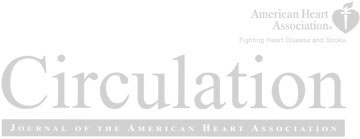
Wisløff et al
Interval Training in Heart Failure
Echocardiographic Resting LV Function
Systolic function
Diastolic function
MAE indicates systolic mitral annulus excursion; Sa, peak mitral annulus velocity during systole by tissue Doppler; LVOTmax, peak
ejection velocity in LV outlet tract; IVRT, isovolumic relaxation time; E, peak mitral flow velocity during early filling; A, peak mitral flowduring atrial systole; Ea, peak annulus velocity during early filling; and Aa, peak annulus velocity during atrial systole.
*Different from baseline, P⬍0.01; †different from baseline, P⬍0.05; ‡different from controls and MCT, P⬍0.02; §different from
and mitochondrial biogenesis,14 was increased by 47% in AIT
subjects (P⬍0.01; Figure 2A) and correlated with improved
Twelve weeks of AIT induced reverse LV remodeling. LV
˙ O2peak (R⫽0.71, P⬍0.01). Maximal rate of Ca2⫹ reuptake into
diastolic and systolic diameters declined by 12% and 15%
sarcoplasmatic reticulum by SERCA in skeletal muscles in-
and estimated LV end-diastolic and end-systolic volumes by
creased by 60% (P⬍0.01; Figure 2B) with AIT and correlated
18% and 25%, respectively (Table 3). proBNP, a marker of
with the improvement in V
˙ O2peak (R⫽0.56, P⬍0.05).
hypertrophy and severity of heart failure, declined by 40%
Maximal oxygen uptake
Figure 1. Left, Endothelial function measured as
P < 0.01
FMD. Right, Maximal oxygen uptake. Data are
mean⫾SD. Lines represent individual values. Proba-
P < 0.01
bility values inside figures indicate within-group dif-
ferences. §Different from control and MCT, P⬍0.01;
†different from control, P⬍0.01.
P < 0.001
P < 0.01
Follow-up
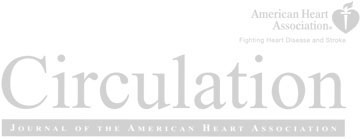
June 19, 2007
p < 0.01 §
p < 0.01 §
Control MCT AIT
Control MCT AIT
Figure 2. A, PGC-1␣ in vastus lateralis muscle.
B, Rate of maximal Ca2⫹ reuptake (Vmax) in the
sarcoplasmic reticulum (SR) in permeabilizedsamples of vastus lateralis muscle. C, Plasma
level of brain natriuretic peptide (proBNP). D,
Total antioxidant status in plasma, ie, the indi-
vidual's level of protection against attack by
free oxygen radicals. Total antioxidant status
was related to the standard (Trolox 1.76 mmol/
L). E, Oxidized LDL in plasma. Data are
p < 0.02 §
mean⫾SD. Probability values inside figures
represent within-group differences. §Different
from control and MCT groups, P⬍0.01.
Control MCT AIT
Control MCT AIT
L
D
L dezi 80
Control MCT AIT
(P⬍0.02) with AIT (Figure 2C). Endurance training did not
Ea by 49% (P⬍0.01; Table 4) and the E/A ratio by 15%
influence wall thickness (data not shown).
(P⫽0.05; Table 4). The ratio of transmitral flow velocity (E)versus annular velocity (Ea) has been proposed as the best
indicator to assess LV filling pressure. It combines the
All indexes of LV systolic performance in the present study
influence of transmitral driving pressure and myocardial
suggest that AIT was highly effective in improving systolic
relaxation and appears to be less sensitive to alterations in
function: LV ejection fraction increased by 10 percentage
preload than the standard Doppler E/A ratio. AIT and MCT
points, which corresponds to 35% in relative terms (P⬍0.01;
reduced E/Ea by 26% (P⫽0.001) and 15% (P⫽0.043; AIT
Table 3), the systolic mitral annulus excursion by 30%
versus MCT, P⬍0.05; Table 4), respectively. Isovolumic
(P⬍0.01; Table 4), and stroke volume by 17% (P⬍0.01;
relaxation time increased by 22% (P⬍0.05) in AIT, but no
Table 3). Furthermore, peak systolic mitral annulus velocity
change was detected in the other groups (Table 4). Deceler-
measured by tissue Doppler imaging, which is an index of
ation time of the mitral flow E wave did not change
global contractility,15 increased by 22% (P⬍0.01; Table 4).
significantly in any of the groups.
Peak ejection velocity, as measured by standard Doppler inthe LV outlet tract, was increased by 19% (P⬍0.05; Table 4).
No significant changes occurred in systolic function in the
Endothelial dysfunction contributes to exercise intolerance,
MCT or control groups.
impaired myocardial perfusion, and LV remodeling inchronic heart failure and serves as an independent prognostic
marker for future cardiovascular events (e.g.16). We observed
Ea is the most direct measure of ventricular relaxation and
a close relationship between improved aerobic capacity and
appears to be less sensitive to alterations in preload than the
improved FMD (R⫽0.69, P⬍0.05) and a greater improve-
traditional Doppler E/A ratio. AIT, but not MCT, improved
ment in FMD by AIT than by MCT (P⬍0.05; Figure 1).
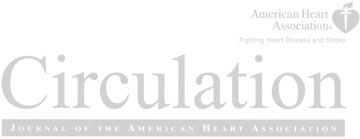
Wisløff et al
Interval Training in Heart Failure
Central to the regulation of FMD is the bioavailability of
3 to 5 times per week induced an improvement in V
nitric oxide (NO), and abnormalities in 1 or more pathways
37% to 42%. A longer training period, a large variation in
that ultimately regulate the availability of NO may lead to
exercise intensity, and varying numbers of training sessions
endothelial dysfunction. It is well established that increased
per week makes comparison with the present study difficult;
oxidative stress and oxidized LDL reduce the bioavailability
however, the previous studies demonstrated that high exercise
of NO, and in the present study, we observed that AIT
intensity is associated with a large improvement of V
The main goal of the present study was to evaluate the effect
(P⫽0.02), which indicates a lower level of reactive oxygen
of exercise when intensity was the only independent variable.
species and higher NO production. In line with this, enhanced
The high-intensity exercise was chosen to be aerobic interval
FMD correlated with increased total antioxidant status in
exercise at 90% to 95% of peak heart rate because this
blood plasma (R⫽0.67, P⬍0.01; Figure 2D). Furthermore,
training method has been used by our research group in
AIT reduced the plasma levels of oxidized LDL by 9%
healthy individuals, yielding large improvements in V
(Figure 2E; R⫽0.59, P⫽0.03).
within a relatively short time period.22 Informal comments
Endurance training did not change the plasma levels of
from the patients in the exercise groups indicated that patients
insulin-like growth factor-1 or endothelin-1 (ET-1). After the
in the AIT group found it motivating to have a varied
exercise test, the median values were 2.9 (95% CI, 2.4 to 3.5)
procedure to follow during each training, whereas those in the
pg/mL and 61.3 (95% CI, 53.2 to 70.8) ng/mL, respectively.
MCT group found it "quite boring" to walk continuously
Finally, high-sensitivity C-reactive protein was similar be-
during the entire exercise period. In addition to improved
tween groups and was not changed by endurance training.
˙ O2peak, improved anaerobic threshold and work economy
The median high-sensitivity C-reactive protein value for all
increase the patient's ability to cope with the physical
groups combined was 5.6 (95% CI, 3.8 to 12.8) mg/L.
demands of daily activity.23 The present study demonstratedthat the anaerobic threshold increased more in AIT than MCT
Quality of Life
when expressed in absolute workloads. Interestingly, AIT but
The MacNew global score for quality of life in cardiovascular
not MCT improved the patients' work economy (Table 2).
disease increased both after MCT (4.4⫾0.4 versus 5.2⫾0.2,
The reason for these adaptations is not fully understood but
P⬍0.01) and after AIT (4.41⫾0.32 versus 5.73⫾0.19,
probably reflects improved mitochondrial function (as indi-
P⬍0.001; difference between groups P⬍0.02). No change
cated by an increased level of PGC-1␣) and calcium cycling
occurred in the control group (4.49⫾0.24 versus 4.48⫾0.36).
in skeletal muscle of AIT patients (as suggested by increasedSERCA capacity).
The major finding of the present study was that AIT was
Reversed LV Remodeling
superior to MCT in patients with postinfarction heart failure
Lower plasma proBNP levels clearly demonstrate the effec-
with regard to reversal of LV remodeling, aerobic capacity,
tiveness of AIT in modifying postinfarction remodeling.
endothelial function, and quality of life. Of particular interest
Accordingly, AIT reduced LV end-diastolic and end-systolic
is the old age of the majority of patients in the present study,
volumes by 18% and 25%, respectively, similar to the effect
who demonstrated robust training-induced adaptation, even in
of 3 months of cardiac resynchronization therapy.24 It has
elderly heart failure patients. This is important information
been shown that treatment with ACE inhibitors halts the
because chronic heart failure is a disease of the elderly; in
progression of remodeling,25 whereas combined treatment
fact, it has been reported that 88% and 49% of patients with
with ACE inhibitors and -blockers in patients with chronic
a first diagnosis of chronic heart failure were ⬎65 and ⬎80
heart failure increases ejection fraction ⬇12%26 similar to the
years old, respectively.17 Despite this, most previous studies
findings with AIT in the present study. These observations
have excluded patients with an age ⬎70 years.
indicate that AIT utilizes a potential for further reversal ofremodeling, because it was added on top of medication.
Moreover, myocardial contractile function also markedly
The large increase in V
˙ O2peak in AIT may be explained in part
improved in AIT patients in terms of ejection fraction, stroke
by lower baseline values and a higher exercise intensity than
volume, mitral annular excursion, ejection velocity, and
in previous studies (eg, Dubach et al18 and Gielen et al19), and
systolic mitral annular velocity measured by tissue Doppler
one could speculate whether we underestimated V
before exercise but not afterward. However, this appears
Ea, which is the most direct measure of LV relaxation and
unlikely, because only 2 patients did not manage to satisfy the
is less sensitive to load than flow indices,27 was improved in
criteria defined for reaching true maximal oxygen uptake at
the AIT group only. Mitral flow is a function of both left
both time points. Furthermore, high blood lactate concentra-
atrial pressure and LV relaxation, and the ratio of transmitral
tions and high respiratory exchange ratios suggest that the
flow velocity (E) versus annular velocity (Ea) has been
patients exercised at maximum effort at both occasions.
proposed as an indicator of LV filling pressure.28 E/Ea
Two previous studies20,21 involving patients with coronary
decreased substantially in the AIT group, which indicates a
artery disease have employed aerobic interval exercise with
decrease in filling pressure toward normal. This is consistent
elements of the same high intensity as in the present study,
with the increase in isovolumic relaxation time. MCT had no
both with a substantial increase of V
˙ O2peak. These studies
significant effect on LV systolic or diastolic performance,
showed that 12 months of exercise at 50% to 95% of V
measured by tissue Doppler imaging, other than causing a
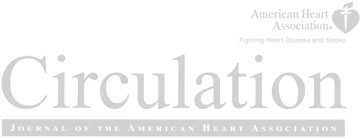
June 19, 2007
minor improvement in the E/Ea ratio; however, the decreased
other than myocardial infarction. A recent study by Rognmo
E/Ea ratio in MCT was due to a small decrease in transmitral
et al4 showed that a similar interval program was more than
flow velocity alone and was not accompanied by supporting
twice as effective in improving V
˙ O2peak compared with
evidence showing an increase in E/A or isovolumic relaxation
moderate-intensity exercise in patients with coronary artery
time, and it might, therefore, represent a dubious result.
disease. However, the present data are provocative andshould encourage the creation of larger multicenter studies
using the same training technique and addressing the safety
It is well established that endurance training improves coro-
nary endothelium-dependent vasodilation in patients with
coronary artery disease.29 It is therefore reasonable to spec-
The present study demonstrates that high-intensity training
ulate that this also occurred in the present study and contrib-
relative to the individual's maximal oxygen uptake is feasible
uted to the antiremodeling effect of AIT in the LV.
even in elderly patients with chronic heart failure and
Both the level of reactive oxygen species and the amount
severely impaired cardiovascular function. It also shows that
of oxidized LDL are known to directly influence NO bio-
the intensity of exercise may be an important factor for
availability, and a normal endothelial function is dependent
reversing LV remodeling, improving aerobic capacity, and
on the balance of oxidant and antioxidant mechanisms.
improving quality of life in patients with postinfarction heart
During oxidative stress, superoxide anions (O ⫺
failure. These findings may have important implications for
function of endothelial NO synthase and reduce the half-life
exercise training in rehabilitation programs and future stud-
of NO by increasing the production of peroxynitrite from NO
ies. It is our view that the time has come to perform
2 , whereas in the normal state, the O2
multicenter studies comparing exercise at moderate versus
superoxide dismutase. AIT improved FMD more than MCT,
high relative intensities for stable cardiovascular patients,
and the reason for this may be the increased bioavailability of
including those with postinfarction heart failure. We suggest
NO in AIT patients. In line with this notion, we found that
that training programs based on these principles may yield
AIT increased the antioxidant status in blood plasma, whichindicates reduced oxidative stress. These results are in agree-
more favorable results than those with low to moderate
ment with a recent study by Linke et al
antioxidative effects of exercise training in skeletal muscle of
patents with chronic heart failure. Because AIT reduced the
We acknowledge assistance from professor Geir A. Espnes and
amount of reactive oxygen species, it was not surprising that
professor Neil Oldridge regarding the literature on quality-of-life
oxidized LDL was lower in AIT. Why AIT was more
effective is unknown, but it appears reasonable to speculatethat higher shear stress during the exercise bouts of AIT
Sources of Funding
patients triggers larger responses at the cellular and molecular
The present study was supported by grants from the Norwegian
level. Despite the decreased level of reactive oxygen species
Council of Cardiovascular Disease, Foundations for Cardiovascular
and improved NO-mediated endothelial function, we did not
and Medical Research at St. Olav's University Hospital, Trondheim,and Torstein Erbo's foundation, Trondheim. This work was also
observe any change in the levels of endothelin-1 and insulin-
supported by grants from the National Institutes of Health (DK
like growth factor-1 in blood, which indicates that endurance
54254), the American Diabetes Association, and the United States
training acts through other pathways or may act locally to
Department of Agriculture (USDA 2005-38903-02315). The funding
improve endothelial function.
organizations had no role in the design and conduct of the study; inthe collection, analysis, and interpretation of the data; or in the
Quality of Life
preparation, review, or approval of the manuscript.
The physiological improvements were paralleled by better
quality of life. Interestingly, quality of life improved more
markedly in AIT subjects than in the other groups, whichsuggests that more intensive physical training is more reward-
ing. This observation is in line with a study by Klocek et al.31
1. Myers J, Prakash M, Froelicher V, Do D, Partington S, Atwood JE.
The mechanism of the superior effect of intensive physical
Exercise capacity and mortality among men referred for exercise testing.
training on the quality of life is not presently known, but it is
N Engl J Med. 2002;346:793– 801.
2. Kavanagh T, Mertens DJ, Hamm LF, Beyene J, Kennedy J, Corey P,
reasonable to suggest that it is due to greater physiological
Shephard RJ. Prediction of long-term prognosis in 12 169 men referred
adaptation and thereby improved capacity for activity in AIT
for cardiac rehabilitation. Circulation. 2002;106:666 – 671.
3. Fletcher GF, Balady GJ, Amsterdam EA, Chaitman B, Eckel R, Fleg J,
Froelicher VF, Leon AS, Piña IL, Rodney R, Simons-Morton DA,
Williams MA, Bazzarre T. Exercise standards for testing and training: astatement for healthcare professionals from the American Heart Asso-
The number of patients in the present study was small, and
ciation. Circulation. 2001;104:1694 –1740.
subjects were predominantly males, which precludes any
4. Rognmo O, Hetland E, Helgerud J, Hoff J, Slordahl SA. High intensity
inference about the safety of this training technique. The
aerobic interval exercise is superior to moderate intensity exercise for
study should therefore be regarded as a "proof-of-concept"
increasing aerobic capacity in patients with coronary artery disease. EurJ Cardiovasc Prev Rehabil. 2004;11:216 –222.
study. It is not known whether the present training protocol
5. Hambrecht R, Gielen S, Linke A, Fiehn E, Yu J, Walther C, Schoene N,
will yield similar adaptations in heart failure due to causes
Schuler G. Effects of exercise training on left ventricular function and
Wisløff et al
Interval Training in Heart Failure
peripheral resistance in patients with chronic heart failure: a randomized
central hemodynamic responses to exercise in men with reduced left
trial. JAMA. 2000;283:3095–3101.
ventricular function. J Am Coll Cardiol. 1997;29:1591–1598.
6. Giannuzzi P, Temporelli PL, Corra U, Tavazzi L; ELVD-CHF Study
19. Gielen S, Adams V, Linke A, Erbs S, Mobius-Winkler S, Schubert A,
Group. Antiremodeling effect of long-term exercise training in patients
Schuler G, Hambrecht R. Exercise training in chronic heart failure:
with stable chronic heart failure: results of the Exercise in Left Ventric-
correlation between reduced local inflammation and improved oxidative
ular Dysfunction and Chronic Heart Failure (ELVD-CHF) Trial. Circu-
capacity in the skeletal muscle. Eur J Cardiovasc Prev Rehabil. 2005;
lation. 2003;108:554 –559.
12:393– 400.
7. Dubach P, Myers J, Dziekan G, Goebbels U, Reinhart W, Vogt P, Ratti
20. Ehsani AA, Martin WH III, Heath GW, Coyle EF. Cardiac effects of
R, Muller P, Miettunen R, Buser P. Effect of exercise training on myo-
prolonged and intense exercise training in patients with coronary artery
cardial remodeling in patients with reduced left ventricular function after
disease. Am J Cardiol. 1982;50:246 –254.
myocardial infarction: application of magnetic resonance imaging. Cir-
21. Ehsani AA, Biello DR, Schultz J, Sobel BE, Holloszy JO. Improvement
culation. 1997;95:2060 –2067.
of left ventricular contractile function by exercise training in patients with
8. Lee IM, Sesso HD, Oguma Y, Paffenbarger RS Jr. Relative intensity of
coronary artery disease. Circulation. 1986;74:350 –358.
physical activity and risk of coronary heart disease. Circulation. 2003;
22. Slordahl SA, Madslien VO, Stoylen A, Kjos A, Helgerud J, Wisloff U.
107:1110 –1116.
Atrioventricular plane displacement in untrained and trained females.
9. Wisloff U, Loennechen JP, Currie S, Smith GL, Ellingsen O. Aerobic
Med Sci Sports Exerc. 2004;36:1871–1875.
exercise reduces cardiomyocyte hypertrophy and increases contractility,
23. Wielenga RP, Coats AJ, Mosterd WL, Huisveld IA. The role of exercise
Ca2⫹ sensitivity and SERCA-2 in rat after myocardial infarction. Car-
training in chronic heart failure. Heart. 1997;78:431– 436.
diovasc Res. 2002;54:162–174.
24. Yu CM, Fung JW, Zhang Q, Chan CK, Chan YS, Lin H, Kum LC, Kong
SL, Zhang Y, Sanderson JE. Tissue Doppler imaging is superior to strain
10. Loennechen JP, Wisloff U, Falck G, Ellingsen O. Effects of cariporide
rate imaging and postsystolic shortening on the prediction of reverse
and losartan on hypertrophy, calcium transients, contractility, and gene
remodeling in both ischemic and nonischemic heart failure after cardiac
expression in congestive heart failure. Circulation. 2002;105:1380 –1386.
resynchronization therapy. Circulation. 2004;110:66 –73.
11. Celermajer DS, Sorensen KE, Gooch VM, Spiegelhalter DJ, Miller OI,
25. Pouleur H, Rousseau MF, van Eyll C, Stoleru L, Hayashida W, Udelson
Sullivan ID, Lloyd JK, Deanfield JE. Non-invasive detection of endothe-
JA, Dolan N, Kinan D, Gallagher P, Ahn S; SOLVD Investigators.
lial dysfunction in children and adults at risk of atherosclerosis. Lancet.
Effects of long-term enalapril therapy on left ventricular diastolic prop-
erties in patients with depressed ejection fraction. Circulation. 1993;88:
12. Corretti MC, Anderson TJ, Benjamin EJ, Celermajer D, Charbonneau F,
Creager MA, Deanfield J, Drexler H, Gerhard-Herman M, Herrington D,
26. Coletta AP, Cleland JG, Freemantle N, Clark AL. Clinical trials update
Vallance P, Vita J, Vogel R; International Brachial Artery Reactivity
from the European Society of Cardiology Heart Failure meeting: SHAPE,
Task Force. Guidelines for the ultrasound assessment of endothelial-
BRING-UP 2 VAS, COLA II, FOSIDIAL, BETACAR, CASINO and
dependent flow-mediated vasodilation of the brachial artery: a report of
meta-analysis of cardiac resynchronisation therapy. Eur J Heart Fail.
the International Brachial Artery Reactivity Task Force [published cor-
2004;6:673– 676.
rection appears in J Am Coll Cardiol. 2002;39:1082]. J Am Coll Cardiol.
27. Sohn DW, Chai IH, Lee DJ, Kim HC, Kim HS, Oh BH, Lee MM, Park
YB, Choi YS, Seo JD, Lee YW. Assessment of mitral annulus velocity by
13. Dempster M, Donnelly M, O'Loughlin C. The validity of the MacNew
Doppler tissue imaging in the evaluation of left ventricular diastolic
Quality of Life in Heart Disease questionnaire. Health Qual Life
function. J Am Coll Cardiol. 1997;30:474 – 480.
28. Nagueh SF, Middleton KJ, Kopelen HA, Zoghbi WA, Quinones MA.
14. Garnier A, Fortin D, Zoll J, N'Guessan B, Mettauer B, Lampert E,
Doppler tissue imaging: a noninvasive technique for evaluation of left
Veksler V, Ventura-Clapier R. Coordinated changes in mitochondrial
ventricular relaxation and estimation of filling pressures. J Am Coll
function and biogenesis in healthy and diseased human skeletal muscle.
FASEB J. 2005;19:43–52.
29. Hambrecht R, Walther C, Mobius-Winkler S, Gielen S, Linke A, Conradi
15. Gulati VK, Katz WE, Follansbee WP, Gorcsan J III. Mitral annular
K, Erbs S, Kluge R, Kendziorra K, Sabri O, Sick P, Schuler G. Percu-
descent velocity by tissue Doppler echocardiography as an index of
taneous coronary angioplasty compared with exercise training in patients
global left ventricular function. Am J Cardiol. 1996;77:979 –984.
with stable coronary artery disease: a randomized trial. Circulation.
16. Halcox JP, Schenke WH, Zalos G, Mincemoyer R, Prasad A, Waclawiw
MA, Nour KR, Quyyumi AA. Prognostic value of coronary vascular
30. Linke A, Adams V, Schulze PC, Erbs S, Gielen S, Fiehn E, Mobius-
endothelial dysfunction. Circulation. 2002;106:653– 658.
Winkler S, Schubert A, Schuler G, Hambrecht R. Antioxidative effects of
17. Senni M, Tribouilloy CM, Rodeheffer RJ, Jacobsen SJ, Evans JM, Bailey
exercise training in patients with chronic heart failure: increase in radical
KR, Redfield MM. Congestive heart failure in the community: a study of
scavenger enzyme activity in skeletal muscle. Circulation. 2005;111:
all incident cases in Olmsted County, Minnesota, in 1991. Circulation.
31. Klocek M, Kubinyi A, Bacior B, Kawecka-Jaszcz K. Effect of physical
18. Dubach P, Myers J, Dziekan G, Goebbels U, Reinhart W, Muller P, Buser
training on quality of life and oxygen consumption in patients with
P, Stulz P, Vogt P, Ratti R. Effect of high intensity exercise training on
congestive heart failure. Int J Cardiol. 2005;103:323–329.
In recent years, there has been a growing consensus that physical inactivity accelerates the severity of heart failure and thatthe level of aerobic fitness predicts survival in a cardiovascular disease population, even when other traditional risk factorsare present or in the setting of established -blockade. However, there is still controversy regarding the level and formatof exercise that can yield optimal beneficial effects. In the present study, we sought to find out whether exercise intensitywas of importance for improving aerobic fitness and cardiac function in patients with postinfarction heart failure. Patientsaged 75.5⫾11.1 years either performed high-intensity aerobic interval training or moderate continuous exercise or receivedstandard advice regarding physical activity. The protocols were made isocaloric so that only exercise intensity differedbetween the 2 intervention groups. The present study demonstrates that high-intensity training relative to the individual'saerobic fitness capacity is feasible even in elderly patients with chronic heart failure who have severely impairedcardiovascular function. It also shows that the intensity of exercise is an important factor for reversing left ventricularremodeling, improving aerobic capacity, and improving quality of life in patients with postinfarction heart failure.
Source: http://www.hokksund-rehab.no/filarkiv/File/Forskningsartikler/Wisloeff_Helgerud_et_al_2007Heart_Failure.pdf
A SPECIFIC THERAPEUTIC RIDING INDICATION: TORSION DYSTONIA Prof. ANNA PASQUINELLI*, Dr. PAOLA ALLORI*, Ph MEIKE SUSANN RAUPACH°, Dr. ETTORE CATERINO* * Child Neuropsychiatrists, Institute of Child Neuropsychiatry, Department of Neurological and Psychiatric Science, University of Florence ° Physiotherapist, TR Instructor, TR Center "La Querce" Montemurlo (Prato).
Magnetic Resonance in Medicine 62:1609 –1618 (2009) Classification of Brain Tumor Type and Grade Using MRITexture and Shape in a Machine Learning Scheme Evangelia I. Zacharaki,1,2* Sumei Wang,1 Sanjeev Chawla,1 Dong Soo Yoo,1,3Ronald Wolf,1 Elias R. Melhem,1 and Christos Davatzikos1 The objective of this study is to investigate the use of pattern









